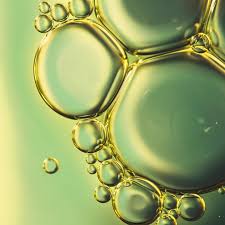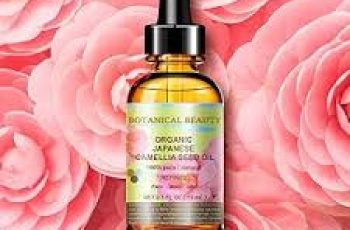
Comedogenic vs. Non-Comedogenic Skincare: What It Means, Why It Matters, and Who Should Care
If you’re even mildly into skincare, chances are you’ve come across the terms “comedogenic” and “non-comedogenic” on product labels, beauty blogs, or ingredient lists.
While these words might sound scientific and intimidating, they play an essential role in helping you choose products that work best for your skin type—especially if you’re dealing with acne, oily skin, or clogged pores.
But what do these terms really mean? Are comedogenic products inherently bad? Are non-comedogenic products foolproof?
We consulted board-certified dermatologists to break down what comedogenicity is, why it matters, and how it impacts different skin types.
Let’s dive into what you need to know to make better, skin-smarter decisions.
What Does “Comedogenic” Mean in Skincare?
The word comedogenic comes from the term “comedo”, which refers to a clogged pore or hair follicle.
Comedones can take the form of blackheads (open comedones) or whiteheads (closed comedones)—both of which are among the most common forms of acne.
So when a product is described as comedogenic, it means it has the potential to clog pores, often leading to breakouts, bumps, or worsened acne.
Dr. Vivian Chin, MD, MPH, a board-certified dermatologist and founder of Koru Wellness & Aesthetics, explains:
“Comedogenic substances generally promote the formation of comedones by blocking pores with a mixture of oil, bacteria, and dead skin cells.”
Dr. Melanie Palm, MD, a board-certified dermatologist and cosmetic surgeon at Art of Skin MD in California, adds that comedogenic ingredients can also impair the skin barrier in certain individuals,
which might lead to redness, inflammation, or worsening of existing skin conditions like rosacea or eczema.
Why Do Brands Use Comedogenic Ingredients at All?
It might seem counterintuitive, but comedogenic ingredients aren’t inherently “bad” or dangerous.
In fact, some of them offer significant moisturizing or occlusive benefits, making them useful for dry or mature skin types.
Dr. Palm points out that certain comedogenic ingredients can be beneficial in the right context.
For example, petroleum jelly, while technically comedogenic, is widely used for healing and protecting compromised skin—especially in people with eczema or very dry skin.
This is why not every product containing comedogenic ingredients is automatically unsuitable. Formulation, concentration, skin type, and how the ingredient interacts with others all matter.
Why Don’t Products List Themselves as “Comedogenic”?
While you’ll often see “non-comedogenic” advertised loudly on packaging, rarely will a product label itself as “comedogenic.”
That’s because the term carries a negative connotation—especially among acne-prone consumers.
Manufacturers typically won’t advertise that their product could clog pores.
So it’s up to consumers to read ingredient lists or check for certifications or independent reviews when trying to determine whether a product might be problematic.
What Does “Non-Comedogenic” Mean?
Non-comedogenic skincare products are formulated with ingredients less likely to clog pores, making them a safer choice for people with acne-prone, oily, or sensitive skin.
Dr. Palm explains:
“Non-comedogenic ingredients are designed to let the skin breathe. These typically include water-based substances, lightweight moisturizers, or ingredients that support skin renewal without buildup.”
Non-comedogenic products often feature ingredients like:
Hyaluronic acid, Glycerin, Peptides, Niacinamide, Salicylic acid (a BHA), Lactic and glycolic acid (AHAs), Benzoyl peroxide, Bakuchiol, Adapalene (a topical retinoid)
While these ingredients are generally safer for acne-prone skin, non-comedogenic doesn’t guarantee zero breakouts.
Your skin may still react to a product, particularly if you’re dealing with an underlying skin condition, hormonal acne, or sensitivities to preservatives or fragrances.
Common Comedogenic Ingredients to Watch For
If you’re trying to avoid pore-clogging substances, here are some of the most commonly identified comedogenic ingredients dermatologists caution against, especially in oily or acne-prone skin:
Coconut oil – Rich in fatty acids but known to clog pores
Cocoa butter – Very occlusive, used in deep moisturizers
Beeswax – Often found in lip balms and creams
Lanolin – Derived from sheep’s wool, used for moisturizing but can be pore-clogging
Algae extract / alginate – Sometimes found in anti-aging or marine-based products
Dimethicone – A silicone-based polymer used to create a smooth finish, sometimes occlusive in certain formulations
Petrolatum / mineral oil – Heavily moisturizing but may trap bacteria and dead skin in some skin types
Palm oil
Isopropyl myristate – Often used in lotions and creams for its smooth texture
It’s worth noting that comedogenicity scales exist, rating ingredients from 0 (non-comedogenic) to 5 (highly comedogenic), but these scales are not standardized and should be taken as general guidance rather than absolute rules.
How to Tell If a Product Is Right for Your Skin
Just because a product claims to be “non-comedogenic” doesn’t guarantee it’s right for you. Here’s what you can do to evaluate skincare products:
Patch Test: Apply a small amount of the product to a less visible part of your face or neck and observe for 24–48 hours.
Check the First 5 Ingredients: The first few listed ingredients often make up the majority of the product’s composition.
Observe Your Skin’s Response: Are you breaking out in areas you usually don’t? Are clogged pores forming more frequently?
Consult a Dermatologist: For persistent breakouts or confusion about ingredients, a board-certified dermatologist can tailor recommendations to your specific skin type.
Who Should Avoid Comedogenic Products?
Acne-prone individuals: Anyone dealing with blackheads, whiteheads, or inflammatory acne should steer clear of highly comedogenic ingredients.
People with oily or combination skin: Large pores are more likely to get clogged.
Those with sensitive skin: Inflammation from clogged pores can trigger flare-ups.
Teens and young adults: Hormonal changes increase sebum production, making breakouts more likely when comedogenic products are used.
Dr. Palm adds:
“Even those with combination skin should be cautious. The oily parts of the face—typically the T-zone—are more vulnerable to breakouts when exposed to occlusive or comedogenic ingredients.”
Who Can Benefit from Comedogenic Ingredients?
Dry or mature skin: Rich, oil-based moisturizers may help retain hydration.
Eczema or compromised skin barriers: Occlusives like petrolatum may protect against water loss.
Cold or dry climates: Thicker creams can shield the skin from environmental stressors.
Are All Oils Comedogenic?
Not necessarily. Some oils are non-comedogenic and even beneficial for acne-prone skin. Examples include:
Hemp seed oil, Rosehip oil, Argan oil ,Squalane, Grapeseed oil
These oils are lightweight, absorb quickly, and contain anti-inflammatory and antioxidant properties.
Always test oils on a small patch of skin first and look for cold-pressed, unrefined options when possible.
The Final Takeaway
The terms “comedogenic” and “non-comedogenic” are more than just industry jargon—they’re valuable indicators of how a product might interact with your skin.
For individuals with acne-prone, oily, or sensitive skin, avoiding comedogenic ingredients can significantly reduce the likelihood of breakouts and clogged pores.
However, skincare is highly individual, and even non-comedogenic products can cause irritation in some people.
Dr. Chin summarizes:
“Non-comedogenic skincare is a helpful guideline, but it’s not a one-size-fits-all. Knowing your skin and listening to how it reacts is just as important as reading the label.”
Whenever you’re in doubt, especially if you’re struggling with ongoing skin concerns, consulting a board-certified dermatologist can help you craft a skincare routine tailored to your unique needs.
Understanding ingredient labels—and how they might interact with your skin type—is the key to achieving healthier, clearer skin over time.


